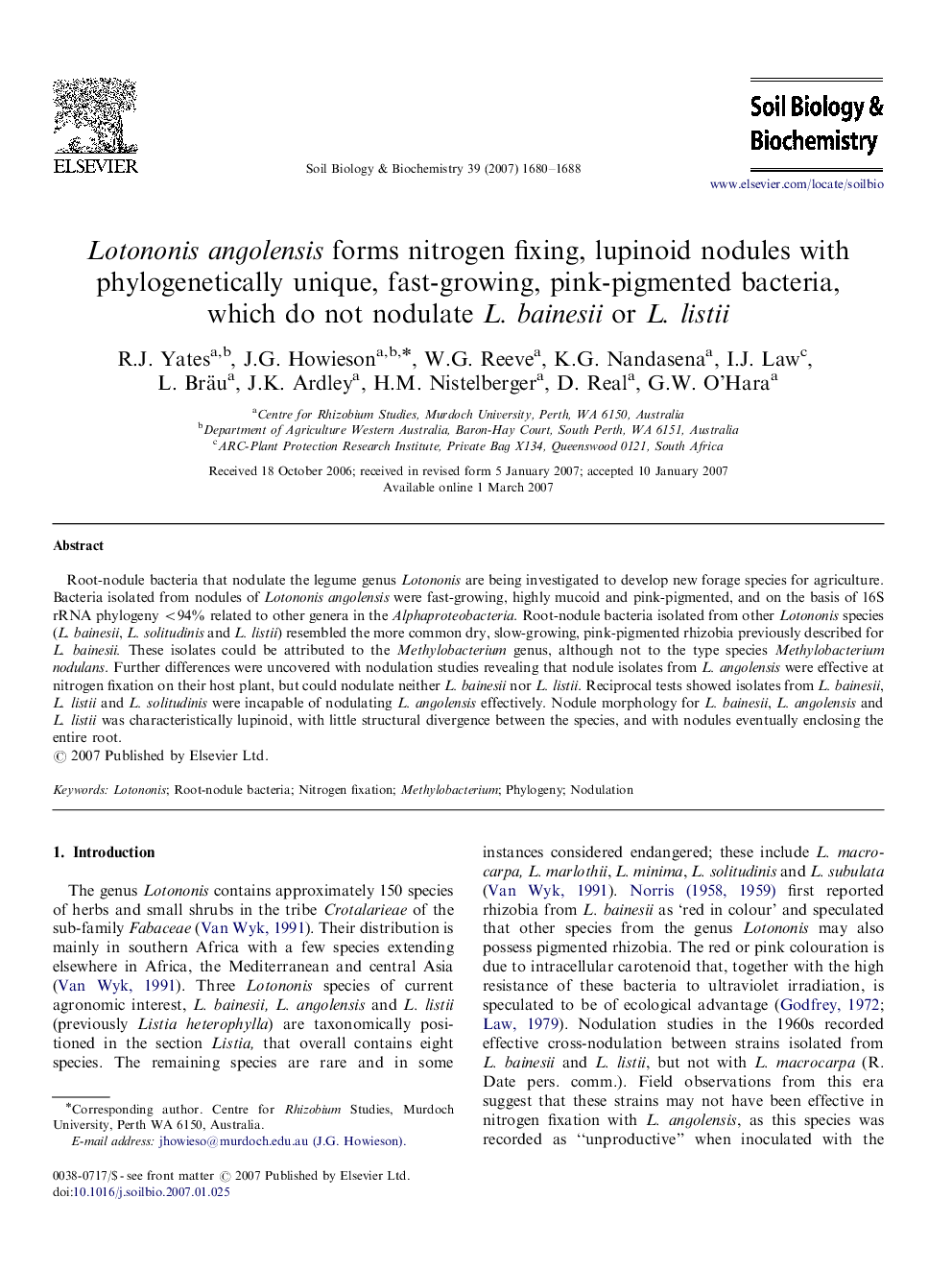| Article ID | Journal | Published Year | Pages | File Type |
|---|---|---|---|---|
| 2026232 | Soil Biology and Biochemistry | 2007 | 9 Pages |
Root-nodule bacteria that nodulate the legume genus Lotononis are being investigated to develop new forage species for agriculture. Bacteria isolated from nodules of Lotononis angolensis were fast-growing, highly mucoid and pink-pigmented, and on the basis of 16S rRNA phylogeny <94% related to other genera in the Alphaproteobacteria. Root-nodule bacteria isolated from other Lotononis species (L. bainesii, L. solitudinis and L. listii) resembled the more common dry, slow-growing, pink-pigmented rhizobia previously described for L. bainesii. These isolates could be attributed to the Methylobacterium genus, although not to the type species Methylobacterium nodulans. Further differences were uncovered with nodulation studies revealing that nodule isolates from L. angolensis were effective at nitrogen fixation on their host plant, but could nodulate neither L. bainesii nor L. listii. Reciprocal tests showed isolates from L. bainesii, L. listii and L. solitudinis were incapable of nodulating L. angolensis effectively. Nodule morphology for L. bainesii, L. angolensis and L. listii was characteristically lupinoid, with little structural divergence between the species, and with nodules eventually enclosing the entire root.
